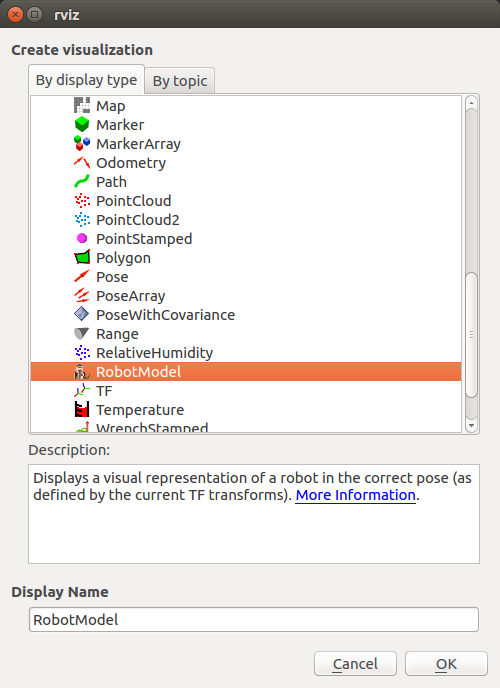hebiros: hebiros_description | hebiros_basic_examples | hebiros_advanced_examples
Only released in EOL distros:
Package Summary
Advanced examples for hebiros with additional dependencies
- Maintainer status: maintained
- Maintainer: Matthew Tesch <matt AT hebirobotics DOT com>
- Author: Xavier Artache <x AT hebirobotics DOT com>, Matthew Tesch <matt AT hebirobotics DOT com>
- License: MIT
- Bug / feature tracker: https://github.com/HebiRobotics/HEBI-ROS/issues
- Source: git https://github.com/HebiRobotics/HEBI-ROS.git (branch: master)
Setup
The physical setup for the rviz, Gazebo, and MoveIt! examples is a 3-dof-arm, the same one used in hebiros_basic_examples. In addition, these examples are constructed using a urdf, a description of the robot containing the meshes, dimensions, inertial properties, Gazebo controllers, etc. For more details, see hebiros_description.
The Mobile Robot example uses two modules arranged in a differential drive configuration. The hardware is discussed more in detail in its respective section.
Examples
rviz
This example demonstrates using rviz in order to visualize a physical robot in real-time.
roslaunch hebiros_advanced_examples x_demo_rviz.launch
You should see rviz open. First, add a new display and select RobotModel.

Next, type robot_description as the parameter for the Robot Description. This parameter should contain the URDF of the robot. You should be able to see the model move as in the following video when you move the physical robot.
Gazebo
This example demonstrates using gazebo in order to simulate the 3-dof-arm robot. The actual controller is the same as in Example 3 of hebiros_basic_examples, the virtual spring. The difference is that the group is constructed using /hebiros/add_group_from_urdf, thus the same program can be used either in simulation via Gazebo or on the hardware.
First, launch the setup file. This will load the urdf to robot_parameter, open Gazebo and start the hebiros_node and example node.
roslaunch hebiros_advanced_examples x_demo_gazebo_setup.launch
Next, launch the start file. This will start the controller_manager, robot_state_publisher, and spawn the model.
roslaunch hebiros_advanced_examples x_demo_gazebo_start.launch
You should see the robot simulated in Gazebo as in the following video.
You can also use the same node to run the example on the hardware.
roslaunch hebiros_advanced_examples x_demo_gazebo_hardware.launch
MoveIt!
This example demonstrates using moveit in order to visualize trajectory planning of the 3-dof-arm robot. You can also use this to command the physical robot.
The launch file assumes that you have a package named x_demo. In order to create the package, follow MoveIt!'s setup assistant tutorial. This will take you through selecting a URDF, assigning joints, assigning labeled positions, and more. There is also an example generated package called x_demo in the hebiros_advanced_examples source files. To use it, place the folder in your catkin workspace.
Launch the visualization file in order to visualize planning and executing paths to different positions
roslaunch hebiros_advanced_examples x_demo_moveit_visualization.launch
With labeled positions, you can control the visualization as in the following video.
You can also try using the visualization interface to execute trajectories on the physical robot.
roslaunch hebiros_advanced_examples x_demo_moveit_control.launch
Mobile Robot
This example demonstrates using move_base, rtabmap_ros, and an Intel RealSense camera in order to create a mobile robot which performs SLAM and is able to navigate using visual odometry.
